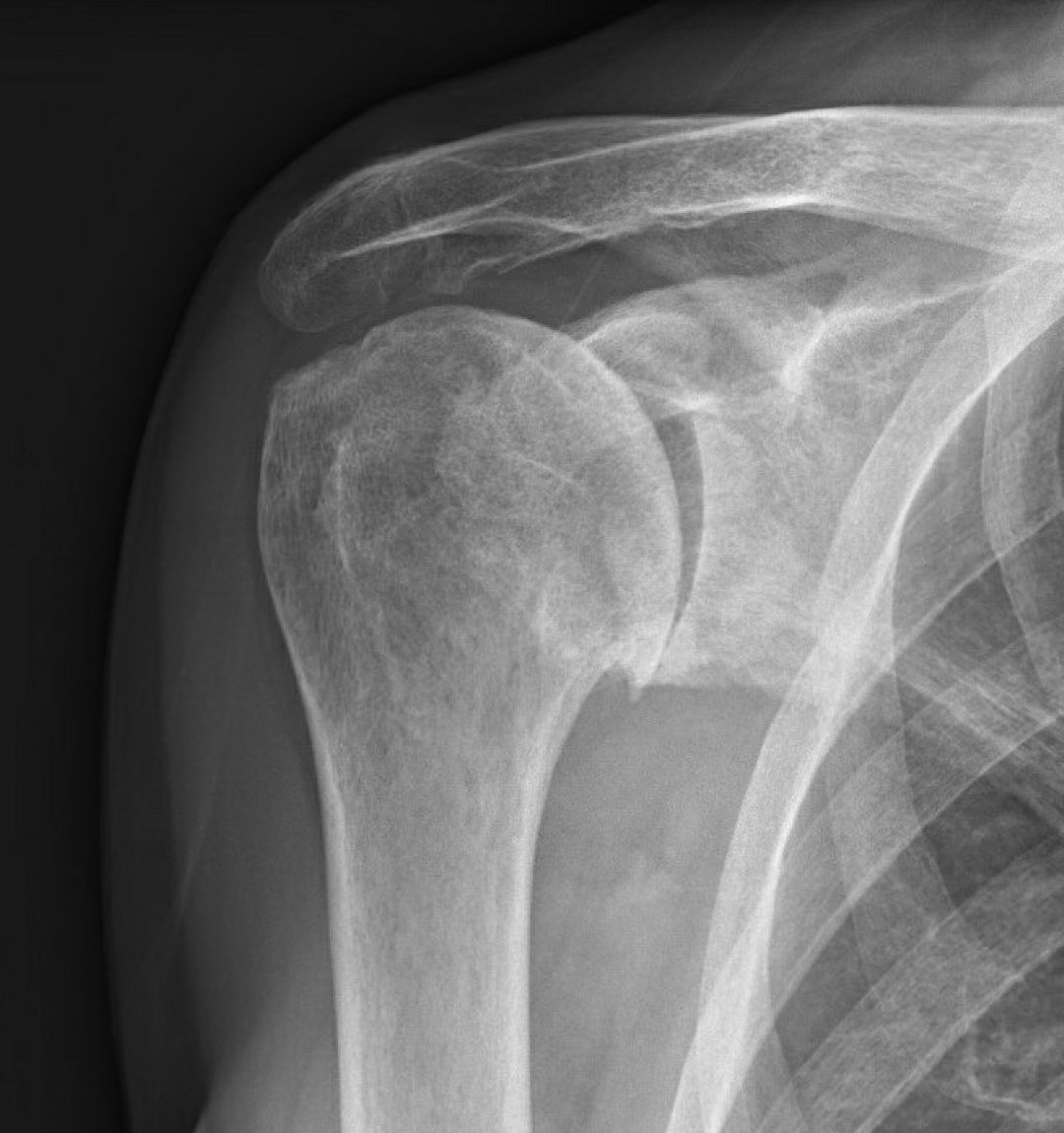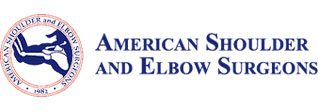
Shoulder arthroplasty surgeries can be complex due to large bone spurs (also known as osteophytes), bone loss, severe stiffness, and soft tissue problems. Many patients have also had surgeries in the past that can also make the procedure more challenging and higher risk for complications. On the other hand, in certain cases painful shoulder arthritis can be straightforward for an experienced surgeon to reconstruct in the operating room. Regardless of the situation, whether straightforward or complex, shoulder surgeons want to be as accurate, consistent, and cost-conscious as possible while focusing on the most important thing: helping our patients achieve their best.
When thinking about the ideal patient outcomes after a shoulder surgery, we can work backwards to consider what steps are needed to achieve that outcome. For any type of shoulder replacement, also called an arthroplasty, the ideal end result focuses on the five factors that make a successful, functional shoulder:
Shoulders with Good Function Have:
1. Stability
2. Muscular Strength
3. Good Range of Motion
4. Smooth Joint Surface
5. Secure Fixation of Components
To achieve this, a comprehensive physical therapy program is paired with a successful surgery. The physical therapy part is incredibly important. We will cover that in a future post! Today, we will focus on how shoulder surgery can be best performed.
In the past, shoulder surgeons would prepare for surgery by analyzing x-rays to help guide the choice of implants to find the best fit for each patient. As technology improved over time, computed tomography (also called “CT scans”) and MRI were also added to help guide implant choice. MRI is particularly useful to check out the rotator cuff. When torn, the rotator cuff cannot stabilize a shoulder after a replacement surgery. However, there are now implants that can both treat the arthritis and compensate for the torn rotator cuff. We call these replacements “reverse shoulder replacements.” They are actually the most common replacement done for the shoulder in 2023! We can talk more about the reverse shoulder arthroplasty (RSA) or replacement in the future. Today, I’d like to focus on how I prepare for shoulder replacement surgery in 2023.
Since MRI and CT came out, more development and innovation have allowed for even more preparation. The CT scan data can be uploaded into a program that allows me to simulate the surgery and test out different sizes of implants. This is called 3D preoperative planning. Preoperative means before surgery. It is always best to plan and prepare well before getting to the operating room!
3D Preoperative Planning: in Detail
Before diving into the pros and cons of 3D templating, let's first define what it is. 3D templating is a process where a patient's anatomy is recreated in 3D using specialized software using the data from a CT scan of the shoulder. The surgeon uses this 3D model to plan and simulate the surgery before the actual procedure takes place. The 3D model can be used for various surgical procedures, including joint replacement, spine surgery, and cancer treatment, to name a few. In my practice, 3D preoperative planning is used to prepare for shoulder replacement surgery, including reverse shoulder arthroplasty, anatomic total shoulder arthroplasty, and the “ream and run” shoulder hemiarthroplasty.
The Pros of 3D Templating
Improved Surgical Planning
Preparation is the key to success and efficiency in the operating room.
There are many ways to prepare before surgery. The surgeon and surgical team can review x-rays and advanced imaging. 3D planning makes this sort of preparation easier and enhances the quality of my ability to work through the surgery before getting to the operating room. The difference is that reviewing imaging is more passive–I look at the imaging and mentally plan out what I want to do. With 3D planning, I can not only review the anatomy of the shoulder, but I can also fine-tune the planned implant position. One of my favorite things is “digital trialing.” I can simulate shoulder positioning and motion with different implants to see which is optimal for that unique patient. I find that this level of preparation helps me forecast implant sizes, anatomic implant position, and the location of problem areas (such as bone spurs) much faster and easier.
Decision-making:
There are a myriad of decisions to make during surgery. 3D planning helps me make many of those decisions ahead of time without the pressure and cost of time in the operating room. Any surgeon or surgical team member can give witness–surgery can be a high tension environment. My goal is to always make the OR a focused, systematic and coordinated flow of teamwork to help each patient to the best of my ability. This requires processing a massive amount of information.
Making decisions before surgery drives increased efficiency and improves my ability to focus on the many remaining choices that are still vital to a great outcome. For example, during every reverse shoulder replacement, the surgeon has to choose which glenoid baseplate is best for a given patient. This choice is made based on many factors, including (but not limited to) patient bone size, desired glenoid implant lateralization, glenoid retroversion, the chosen humeral implant, RSA angle, the % of glenoid seating achieved, the length of the central screw, and if an augmented baseplate will be used. By using the 3D planning program, I can review the implant and address all of these factors before making an incision. This is very valuable to me.
Increased Accuracy
Surgery requires precision. No one would choose a surgeon who rushes through surgery, aiming for “pretty good.” The soft tissues of the shoulder are very delicate and must be preserved for a surgery to be successful. These structures include nerves and arteries that live millimeters away from parts of the shoulder that require releases to optimize post-operative range of motion. This does not leave room for error.
Similarly, the bony anatomy of the shoulder requires accuracy as well. I want my patient to achieve the best range of motion possible–I can assess implant position and sizing in Blueprint (the 3D planning software I use) to enhance my accuracy with the 3D-printed custom guide for the center pin of the glenoid. The accuracy of this guide is better than I would be with an “analogue” guide. The custom guide also makes the surgery easier to do! Once it is engaged and secure on the glenoid, I know that the pin will be in the planned location for that specific patient.
I also use mixed reality technology in the operating room to enhance my ability to actively assess the patient’s plan while operating. It is almost like bringing the computer into the surgical field. For cases that cannot have a 3D printed guide, the mixed reality technology is even more helpful, such as in a revision shoulder replacement. This technology is in its early stages, but will have future iterations that will allow for the mixed reality headset to guide the surgeon to the optimal, pre-planned implant position.
The 3D templating process, 3D-printed custom guide, and the future of mixed reality “guided” surgery are kind of like the “bumpers” at the bowling alley. The bumpers keep your ball out of the gutter! When we think of excellence in sports, we often think of champions that have won championships like Michael Jordan or Tom Brady—the true “GOATs” of their fields (GOAT is an acronym: the Greatest of All-Time). But even Michael lost to the Bucks, Celtics, and Pistons (6 years in a row!) in the playoffs before he was able to win his first championship. Mr. Brady, the NFL player with the most championship rings of all-time-–he lost 3 times on the biggest stage. Surgeons want to be their best for our patients, just like these sports heroes. And we are expected to not just do well, but to be extremely precise and consistent for our patients because the stage has far more at stake than a game–our patient’s safety. The best way for me to be my best is to use my training, my experience, preparation, and technology to be my best.
Accuracy in surgery is a complex topic. It is hard to define: are we talking about accuracy in carrying out the surgical plan or delivering a good outcome? I believe accuracy needs to reflect both the surgical plan and the patient reported outcome. 3D templating takes my accuracy to the next level. The current 3D printed, patient-specific pin guides are customized and facilitate ease of surgery while making me more accurate. This sort of double-win is especially helpful for surgeons performing a lower volume of shoulder surgery, but even high-volume surgeons can benefit from tools to enhance accuracy and consistency.
The Team Approach
The operating room is more like an orchestra than a world famous-DJ working solo at Coachella. Surgeons cannot succeed when working alone. Similar to the many sections of the orchestra, the surgeon is director of the “music” of the surgical procedure; the music sounds beautiful when each section performs excellently and at the right time. In the operating room, the workflow is very similar.
Successful surgery needs contributions from team members with different but complementary skills. These important people include the anesthesia team, nursing teams, the implant team, sterile processing and the turnover/sanitation teams. The 3D plan helps me communicate with these teams about the complexity of the surgery and estimated case length. Forecasting the needed tools and supplies to facilitate a smooth operation is also aided with a thorough 3D plan. By having the 3D plan ready to go in advance of the surgery, it helps the surgeon and implant team plan ahead regarding potential pitfalls—and prevent them from even happening.
The Cons: What are the negatives of 3D preoperative planning?
Cost
New technology, including 3D planning comes with added cost. The 3D plan is based on a CT scan, which is then converted into a 3D model in proprietary software. Each of these steps can increase the cost of the preoperative planning process, and which is a negative for individual institutions, patients, and for healthcare systems worldwide. These factors alone often drive surgeons to avoid use of 3D planning.
Counter-argument
However, the direct costs associated with the CT scan and software may be offset by various factors, including decreased operative time, decreased revision rate, and increased consistency. Further research is needed to determine how the direct costs are offset by secondary cost savings in terms of preventing use of incorrect implant sizes, revisions, and suboptimal outcomes. These research studies are complex and will require significant resources to complete, but are necessary to best understand how this new technology impacts the cost of shoulder arthroplasty.
Surgeon Flow Disruption
The optimal surgery will have a flow that reflects the experience of the surgeon and the team. Some high-volume shoulder arthroplasty specialists with extensive experience have a well-defined workflow. Some of these surgeons may label a patient-specific drill guide, mixed reality guidance or robotic assistance as disruptive. Some of these surgeons have decades of operating on the shoulder with great patient reported outcomes but without 3D planning. There may also be concern about the new technology slowing down surgical pacing, or taking excessive time to plan before surgery.
Counter-argument
Any new tool in the operating room can change surgical pacing, whether digital or physical. 3D planning is no different. The foundation for the effectiveness of 3D planning in a surgical workflow is the pre-surgery stage. The planning phase before surgery does take time. But I would far rather take a few minutes to make adjustments to the 3D plan while sipping my delicious coffee in the office than struggle through a surgery with only preoperative x-rays available to make the surgical plan.
An excellent 3D preoperative plan helps the surgeon and team carry out an excellent surgery. Some surgeons may benefit more from certain aspects that are part of the 3D planning ecosystem, such as the patient-specific guide or possibly a mixed reality headset during the surgery. I recommend surgeons consider the variations in the use of 3D preoperative planning before and after surgery before calling it disruptive for all surgeries.
Each surgeon must consider the needs for each surgery and case. Some surgeons may use 3D planning for all of their surgeries, while other surgeons may be more comfortable using 3D planning only for their complex surgeries. I believe there are certain use cases that would be beneficial for most surgeons, including situations where there is significant glenoid bone loss. While I do understand the concerns about surgical workflow, I see the current landscape of surgical technology moving to embrace accuracy while also working to facilitate efficient surgery. I all want to be as accurate, efficient, and consistent as possible for my patients; 3D planning helps me and many other shoulder surgeons be our best everyday, every case.
Con: False Sense of Security
Making a 3D preoperative plan doesn’t mean the surgery is over! It can be very gratifying to see the surgical plan with the templated implants, and even see the implants move digitally. A 3D digital plan could lead to a false sense of security, especially for surgeons that are in their early career, or who are doing a lower number of shoulder arthroplasty surgeries. Surgery can be challenging, even when with the latest 3D planning software.
Some of the biggest challenges that surgeons face in the operating room go far beyond the implant choice and placement. Surgeons must consider their patient’s social support before and after surgery, rehabilitation protocol, risk factors for complications, patient body habitus, disposition plan (same-day discharge versus inpatient stay), wound management, antibiotic use, allergies, and medications for management of post-surgical pain. These are all integral to a great outcome after surgery. The 3D plan is part of the preparation process for a successful surgery, but it should not give anyone on the surgical team that everything is “OK” because the plan was completed. Eventually, surgery will humble any surgeon–surgery is complex and requires consideration of all of these factors for an optimal outcome.
Counter-argument
With proper training and experience, an orthopedic surgeon can receive great benefit from 3D planning as part of a comprehensive preoperative optimization program. The 3D plan, in my practice, is like a spoke on a bicycle wheel. Each spoke is important to helping you reach your destination. Surgery is complex–while the 3D plan is not the end goal, it is a valuable tool.
Obviously, having a patient-specific guide for glenoid pin placement should not give a surgeon a false sense of security, but it can give me confidence to move on quickly to the next step of the surgery when placing that pin. Confidence in the operating room is valuable, and usually takes many years and surgeries to develop. Safe surgeons that are definitive in their actions tend to have smooth and efficient surgeries. 3D planning helps me be confident in the operating room without having a false sense of security–these are two very different things. The next generation iterations of 3D planning for the shoulder involve “guided” surgery by using a mixed reality headset, navigation system, or a surgical robot. These will further instill confidence in the patient, the surgeon and the surgical team to know that they are carrying out the exact preoperatively planned surgery.
The Result: I’m Pro 3D Planning
After over half of a decade of doing shoulder surgery without the preoperative 3D plan, I have fully changed course. Now I use of 3D planning for nearly all of my shoulder arthroplasty surgeries. This technology helps me better prepare for each surgery by helping me first understand each patient’s unique shoulder problems. Secondly, the technology helps me be as accurate and consistent as possible. The 3D planning software also helps me communicate with our different teams before and during surgery. Lastly, this technology helps me forecast different aspects of the surgery which decrease the number of decisions I need to make in the operating room. The goal for all tools, including 3D preoperative planning for shoulder arthroplasty, is to enable safe, accurate, and efficient shoulder arthroplasty surgery. We can all agree on that.







